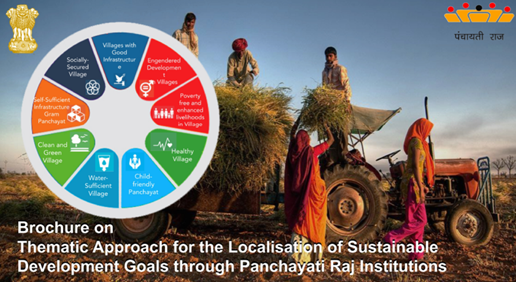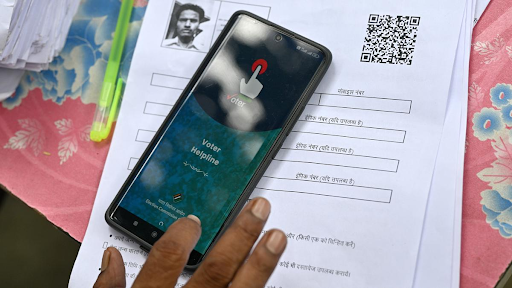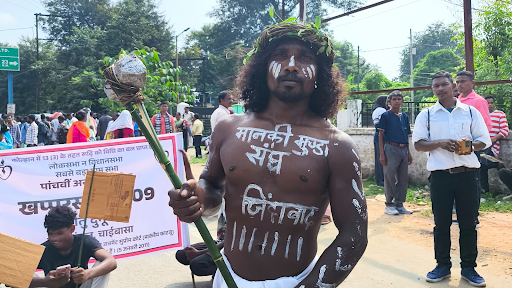Description

Copyright infringement not intended
In News
- The Union Minister of State for Panchayati Raj has inaugurated National Write-Shop on “Roadmap and Plan of Action on Localisation of Sustainable Development Goals in Panchayati Raj Institutions”.
- The initiative will provide a platform to discuss and decide the actions and steps that need to be taken at every level to speed-up SDGs related works in Panchayats.
- The agenda is to prepare the Roadmap and Draft a Plan of Action on the Localization of SDGs in PRIs.
Panchayati Raj
- The 73rd Constitutional Amendment Act 1992 has added a new Part IX to the Indian constitution titled “The Panchayats”.
- The new Part covers provisions from Article 243 to 243(O)
- It also introduced the 11th Schedule covering 29 subjects within the functions of the Panchayats.
- The core objective behind the amendment;
- Provide adequate autonomy to local governments.
- Provide adequate powers to take decisions in matters transferred to local governments.
- Devolution of functions, finance and functionaries.
- Ensuring social justice and local economic development.
- To cover all aspects of rural development and human development.
- The Amendment Act implemented article 40 of the DPSPs which states that the “State shall take steps to organize village panchayats and endow them with such powers and authority as may be necessary to enable them to function as units of self-government”.
Key features of the 73rd Amendment Act
- Every State shall have Panchayati raj institutions in rural areas.
- A three-tier system for States with a population of over two million.
- Gram Panchayat at the village level.
- Panchayat Samiti at the block level.
- Zila Parishad at the district level.
- For areas with less than 2 Million population, a two-tier system;
- Gram Panchayat at the village level.
- Zila Parishad at the district level.
- There is also a provision for reservation of seats – not less than one-third of seats for women while for scheduled caste and tribes, proportional to their population.
- 5 years term of office for the elected representatives of these local bodies.
- Each district has a District Planning Committee (DPC), which prepares a development plan for the district consolidating the urban and rural local plans and higher-tier plans.
- States are required to transfer power and responsibilities to these Gram Sabhas.
- 29 subjects are transferred to the local governments.
- State Government needs to appoint a finance commission every five years to make recommendations on the following:
- The Distribution of the taxes, duties, tolls, fees etc. between the state and Panchayats.
- Allocation of proceeds between various tiers.
- Grant in aids.
- State to form a State Election Commission that would have the power to supervise, direct and control the elections to the Panchayats.
- Any person who is qualified to become an MLA is qualified to become a member of the Panchayat, but for Panchayat the minimum age prescribed is 21 years.
- The provisions under 73rd Amendment do not apply to:
- Entire states of Nagaland, Meghalaya and Mizoram.
- Hill areas in the State of Manipur for which District Councils.
Role of Panchayati Raj Institutions in Socio-economic development
- Panchayati raj institutions have the potential to maximize the production and productivity of agriculture and rural industries.
- It could create new employment opportunities by formulating appropriate policies for the development of agriculture, and animal husbandry, and by encouraging the adoption of the best available technologies and practices.
- It could help in creating an atmosphere to promote Value-added products from agriculture, animal husbandry, and non-timber forest produce.
- Assured employment opportunities for all households in the village through effective management of MGNREGA.
- It can also ensure equitable wages for men and women and zero child labour.
- Employment opportunities for persons with disabilities.
- Identify potential candidates for setting up of enterprises and skill mapping of the interested candidates.
- Situation analysis of existing micro, small and medium enterprises within the Panchayat area.
- Organize entrepreneurial development training/skill training.
Step by the Government
- Deen Dayal Upadhyaya Grameen Kaushal Yojna
- It is a placement-linked skill development scheme for rural poor youth.
- Swachchh Bharat Mission:
- To provide access to every person to sanitation facilities including toilets, solid and liquid waste disposal systems, village cleanliness and safe and adequate drinking water supply.
- Sansad Adarsh Gram Yojna
- Each Member of Parliament will take the responsibility for developing physical and institutional infrastructure in selected villages.
- Mahatma Gandhi National Rural Employment Guarantee Scheme (MGNREGS)
- Provide ‘right to work' to the people falling Below Poverty Line.
- It guarantees 100 days of employment in a year to the village people.
- 50 workers should be women.
- National Rural Livelihood Mission
- Under this scheme, the government provides loans up to 3 lakh rupees at the rate of 7% which could be lowered to 4% on timely repayment.
- Pradhan Mantri Gram Sadak Yojna
- To provide all-weather road connectivity to the rural areas whose population is more than 500 persons and in terms of hilly areas, it is 250 persons.
- Antyodaya Anna Yojna (AAY)
- The scheme provides food grains to Below Poverty Line (BPL) families at a very subsidized rate.
- A total of 35 kgs of food grains is provided to a family. Rice is provided at the rate of Rs. 3/kg and wheat at 2 Rs.2/kg.
- National Rural Health Mission
- To provide accessible, affordable and accountable quality health services even to the poorest households in the remotest rural regions.
- Aam Aadmi Bima Yojna
- Under this scheme, one member of the family is covered.
- The premium of Rs. 200 per person per annum is shared by the state and central governments.
- The insured person need not pay any premium if his/her age is between 18 years to 59
- Sarva Siksha Abhiyan
- Its main aim is to make free and compulsory education for children between the ages of 6 to 14, a fundamental right.
- The right to education is related to the 86th Amendment to the Constitution of India.
https://www.pib.gov.in/PressReleasePage.aspx?PRID=1839186
1.png)
https://t.me/+hJqMV1O0se03Njk9













